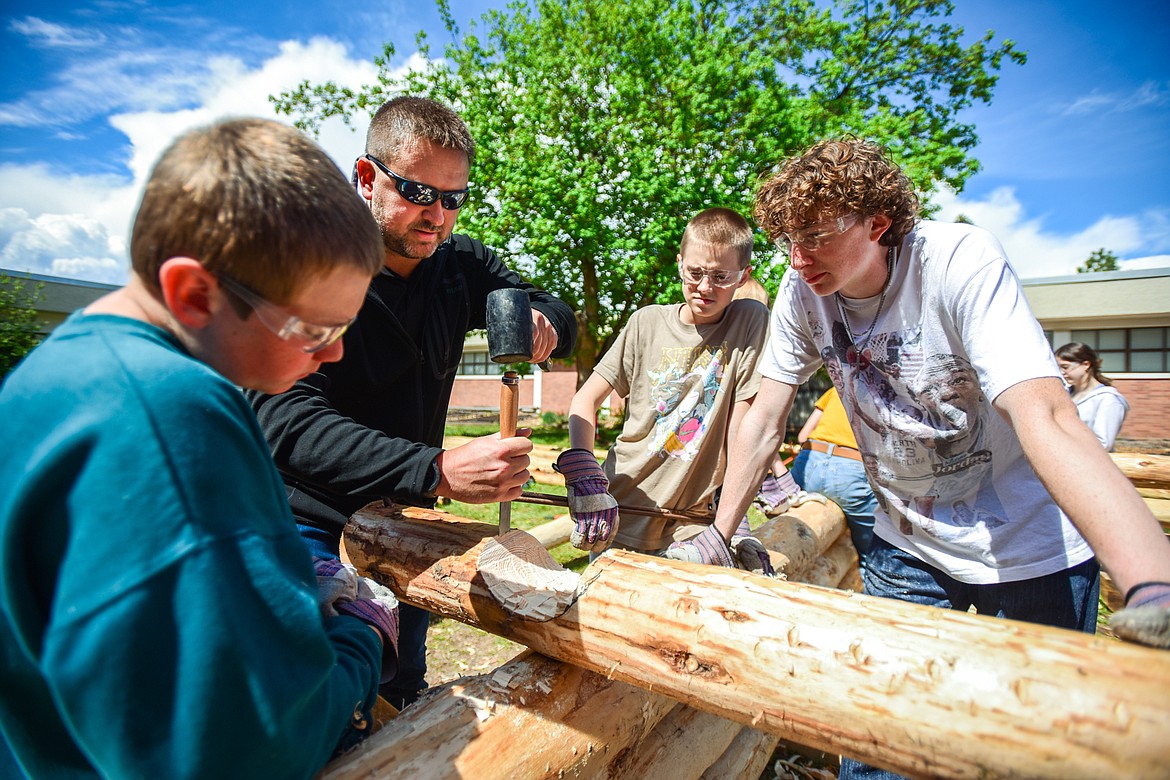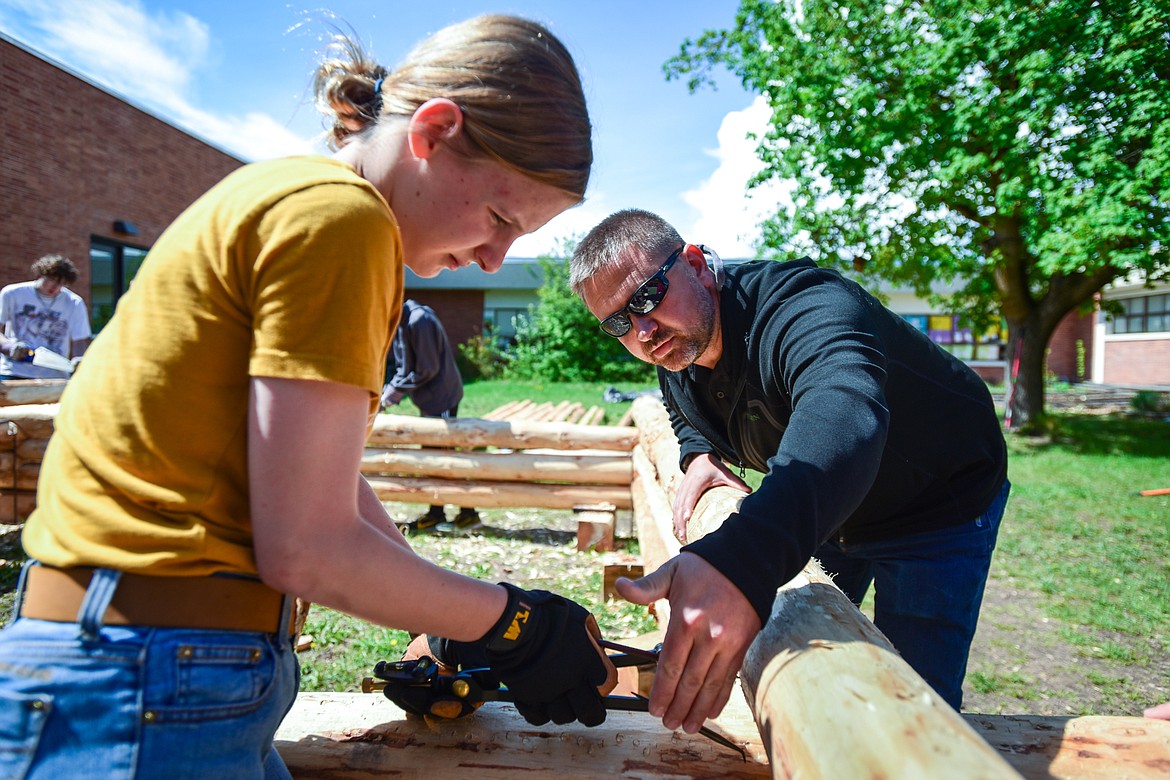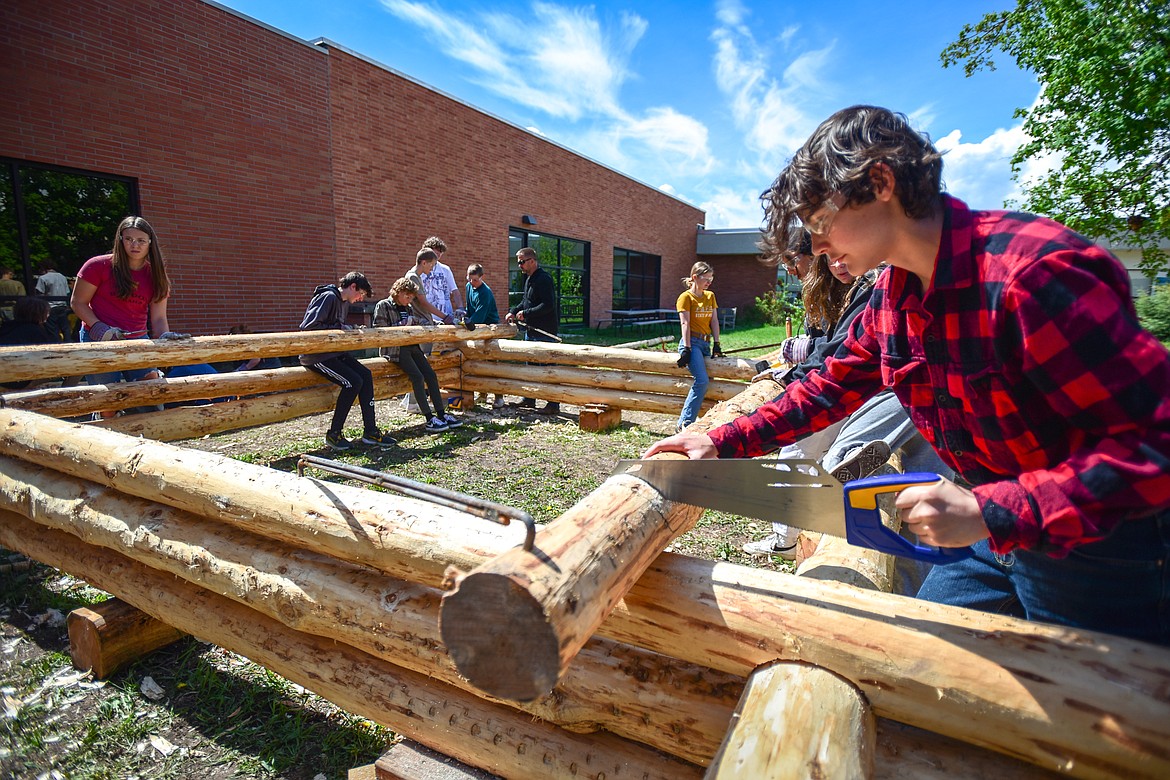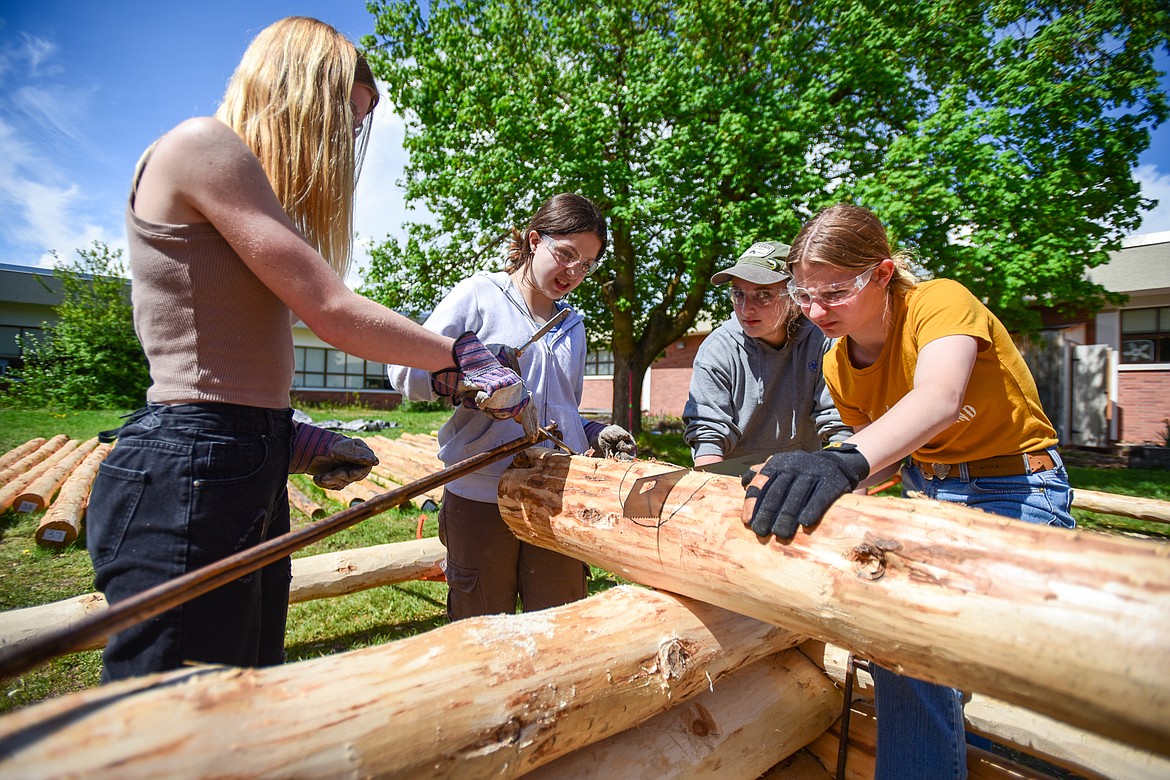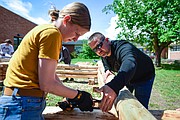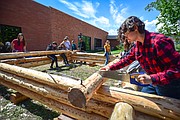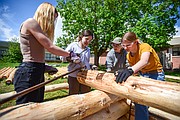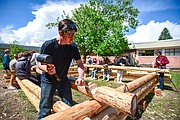Log by log, middle school students build history lesson
HILARY MATHESON | Hagadone News Network | UPDATED 2 years, 7 months AGO
Outside in a courtyard at Kalispell Middle School, a small log cabin — the handiwork of eighth-graders — is taking shape log by log.
“All of the people coming out to Montana in the late 1800s would have built really similar structures with the trees from the landscape,” says Montana History teacher Kris Schreiner as he opens an exterior door revealing the structure.
The log cabin build is part of a homesteading unit the students are learning, which ties into other lessons Schreiner teaches on Montana’s timber industry, mountain men and the fur trade.
The 14 by 14 house, or “single-pen,” meant close living quarters for pioneers and settlers with families.
“This is everything,” Schreiner said — living room, kitchen and bedroom. “They just needed a roof over their head to get ahead; to take advantage of the resources that we have in Montana to have a better life.”
Picking up various hand tools, students formed small groups to work on different aspects of building. A few students chose drawknives and walked over to a log to strip any remaining bark or knots they didn’t get to when they started the process in the classroom during the winter.
“We’re trying to clean up the logs as much as we can to prevent any kind of rot. You want to remove bark because bark will hold water, which then equals rot in the log, so we want them as clean as possible,” Schreiner said. “The knot cleanup is mostly so when we fit the logs, the log doesn’t end up sitting on a knot that we have to then take out later … to keep the structure relatively level.”
Other students gathered to watch Schreiner do a quick scribing demo. Using a tool called a scribe, he began marking a line where a notch will go in the log. The notch is where the logs are joined, forming the corner of the cabin.
The log scribe is reminiscent of a math compass, but much larger and with the addition of bubble levels. The tool is also used to transfer the unique shape, or contours, of the log below the one being scribed to ensure a precise fit.
Schreiner went over how to hold the tool correctly and keep it level.
“If we tilt too much our notch is going to get too deep, or too shallow, OK. So, what you’re going to do is you’re going to come in, rest your needlepoint here on the end. You’re going to get your tool level and you’re just going to drag real slow on the log,” he said, handing the scribe over to eighth-grader Travis Koehler.
Koehler began marking a semicircle–shaped notch.
“This is the saddle notch, which is kind of the old classic style that pioneers would have built with,” Schreiner said. “It’s about the easiest to do with hand tools.”
“These lines that we mark, all this part of the wood is going to be gone, that’s what he’s doing,” Koehler said, pointing across the way to classmate Barrett Barnes.
Barnes was busy making vertical cuts within the notch marks and knocking out the sections with a mallet and chisel. Barnes, who has construction experience building pole barns with his dad, enjoys building to see “the accomplishment at the end.”
At the other end of the log, a student tapped the mallet against a chisel to even out the groove of another notch.
“Reverse the bevel, you’re digging into the wood,” Schreiner said, stepping in to demonstrate, and handing back the tools.
AIMING TO gain new skills, eighth-grader Rylee Bigelow said prompted her to get involved as she could with the project.
“It’s a super fun experience because I’ve never done anything like this before,” she said.
Bigelow agreed that it gave her a better appreciation of the labor-intensive lives of settlers.
With all the inclement weather this winter and spring, Schreiner anticipates the cabin will have to be completed by next year’s eighth-graders.
“We’ll get really close to having all the walls and enough logs for the roof, which they’re going to design with a blueprint program on how the roof pitch will work,” he said, noting that there’s a lot of math involved in building the cabin.
“They’re working with Pythagorean theorem for squaring the cabin and they’re calculating the board feet in every log using the Doyle scale,” Schreiner said, and other math concepts used in the construction industry.
Once completed, the log cabin will be disassembled. An old-fashioned rock foundation will be constructed on-site and the cabin reassembled and chinked with mortar as traditionally done 100 years ago, or more he said.
“They’ll chink all the cracks and fill it with mortar and smooth it out. And they’ll design where the windows and door will go,” Schreiner said.
The finished log cabin will remain at the school as a model for future students to build log cabins.
“The hope is that we get to where we’re building one in the course of a year and students will market it, sell it locally and reassemble it on the purchaser’s property,” Schreiner said, with the proceeds from a sale going toward building the next cabin.
“That’s our end goal — what we’d like to see it grow to,” he said.
The log cabin project was made possible through logs donated by F.H. Stoltze Land and Lumber Co. and a $2,000 Kalispell Education Foundation grant funding by engineering firm Morrison-Maierle.
History is conducive to all sorts of hands-on projects, which is an important part of Schreiner’s teaching style.
“Every one of my units we try to do something hands-on. So like [in] our farm and ranch unit, we grind wheat and churn butter and bake bread. For our mountain man unit and fur trade unit we tan deer hides in the classroom. They go through that all with hand tools with the exception we’re not brain-tanning hides. For our early human history in Montana, we do atlatls and bows and arrows,” Schreiner said.
“It’s no different than any classroom, but we’re outside and we’re working with large materials,”
And some of these kids are excited because this is a trade they may want to go into,” he said.
Reporter Hilary Matheson may be reached at 758-4431 or [email protected].
ARTICLES BY HILARY MATHESON
Whitefish High School wins East Helena speech and debate tournament
Scoring 225 points, the Whitefish High School speech and debate team took first place at a weekend tournament.

Glacier High speech and debate team secures second in Bozeman
The Glacier High School speech and debate team secured second place, and Flathead High School, third in Bozeman.

TUBACHRISTMAS celebrates 30 years of Kalispell performances
Musicians invited to join
Tubachristmas toots its own horn with a Dec. 15 performance of Christmas carols featuring an ensemble of tuba, euphonium and baritone players.

